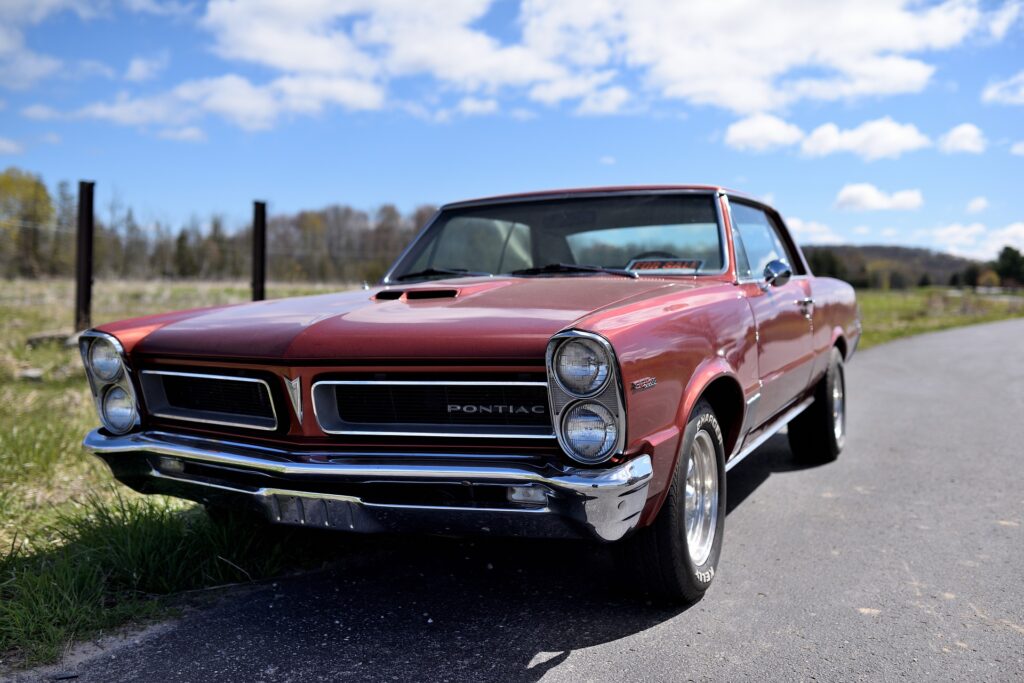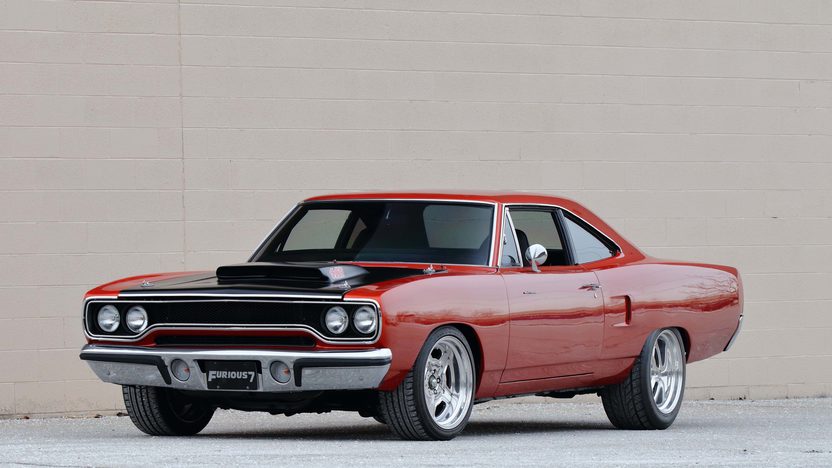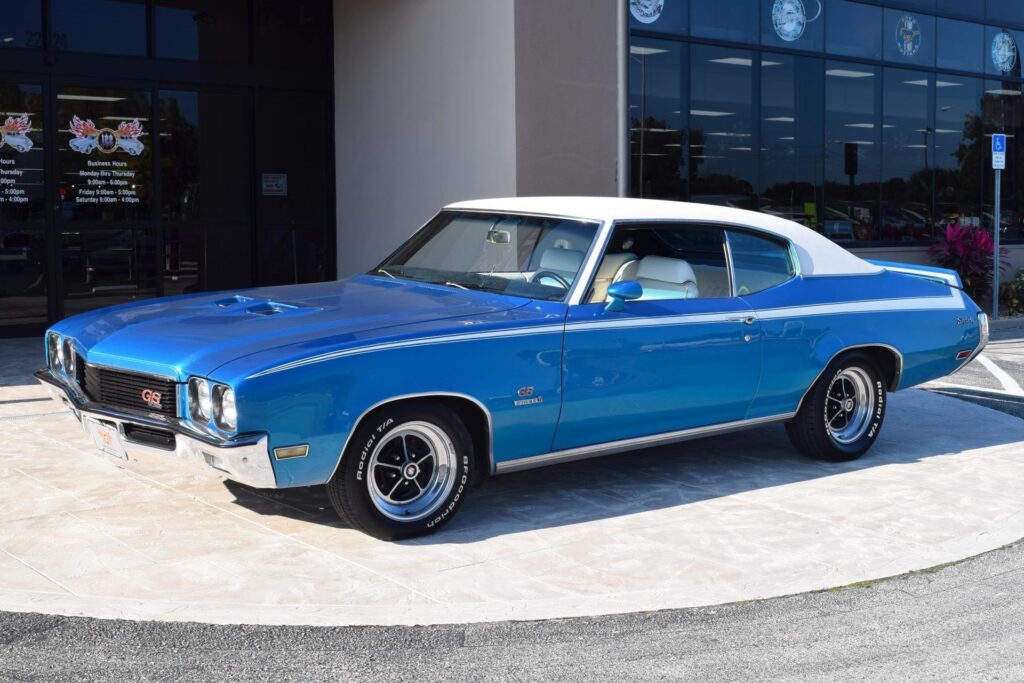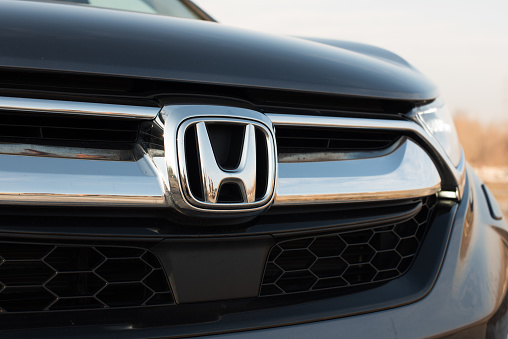I
n this article, the long-running discussion over the best Muscle Cars from the 1960s and 1970s comes to a close. Continue reading if you’re seeking for data-backed results on the top Muscle Cars from the 1960s and 1970s (rather than just my opinion like every other article on the internet),
Discover the full list of vintage American Muscle Cars that ruled the 1/4 mile charts year after year from 1964 to 1974. Let’s start with a definition of a muscle automobile if you’re unfamiliar.
The golden age of muscle cars lasted from 1964 to 1974, and that’s what we’ll be talking about in today’s article.
They say you only go around once, but with a muscle car you can go around two or three times
– Tim Allen –
What is a Muscle Car?
Muscle Cars were V-8-powered 2-door intermediate-sized automobiles created for straight-line performance in the quarter-mile by American automakers such as Chrysler, Ford, General Motors, and American Motos.
The 1964 Pontiac GTO was the first muscle car, capable of sub 14-second quarter-mile times right out of the box. A 389 CID V-8, three 2-bbl carburetors (“Tri-Power”), and a 4-speed manual transmission were the perfect combo.
Younger buyers were targeted for Muscle Cars, which had sticker costs in the $3,000 range and were devoid of creature comforts. Other features include front and rear seats, dual exhaust, rear-wheel drive (ideally with both wheels spinning), and a 4-barrel carburetor at a minimum.

What Are the Best Muscle Cars?
For the sake of this article, the best Muscle Cars are those that appeared in the top ten fastest muscle car rankings on many occasions between 1964 and 1974.
It doesn’t matter if a model featured numerous times in a single year or only once in a single year; what matters is the total number of times one specific model occurred over the course of this time period.
Given that these are the best of the best muscle car models, we’ll look at the top five outcomes based on that data to determine the winners.
Now that that’s out of the way, how about we take a look at the finest Muscle Cars from the 1960s and 1970s?

5th Place: The Plymouth Road Runner
From 1968 to 1974, the Plymouth Road Runner was ranked fifth on the top 10 quickest Muscle Cars lists 45 percent of the time.
In 1968, the Plymouth Road Runner was introduced as a low-cost, high-performance supercar aimed at youthful buyers with limited funds.
A stripped-down big block Road Runner that could run low 14-second quarter-mile passes out of the box could be had for less than $3,000.
Depending on the year, the Plymouth Roadrunner had a 340, 383, 440, 440 Six Pack, or 426 Hemi. The 440 Hemi with three 2v carburetors (dubbed the “Six Pack”) and the 426 Hemi with dual 4v carburetors were the two best performances.
The 440 Six Pack in a 1969 1/12 Plymouth Roadrunner, on the other hand, was the faster of the two engines.
Historical Performance Statistics
|
Year |
Model |
Engine |
ET |
Ranking |
|
1969 |
Roadrunner |
440 Six Pack |
12.91 |
2nd |
|
1969 |
Roadrunner |
426 Hemi |
13.32 |
6th |
|
1970 |
Roadrunner |
426 Hemi |
13.34 |
3rd |
|
1971 |
Roadrunner |
440 Six Pack |
13.71 |
6th |
|
1971 |
Roadrunner |
426 Hemi |
13.50 |
3rd |

4th Place: The Buick Gran Sport
The Buick Gran Sport is ranked fourth, appearing on top 10 quickest Muscle Cars lists 55% of the time.
The Buick GS was a $200.53 option on the base Skylark chassis when it was introduced in 1965, and it cemented Buick’s place as a top-performing American vehicle during the 1960s and 1970s.
The Gran Sport gallantly entered as the fifth quickest muscle car of 1965 in its first year, with variable levels of quarter-mile success over the next nine years, with its 401 CID Wildcat 455 engine rated at 325 horsepower.
Over the years, the Buick GS was available with a 350, 400, 401, and 455 CID V-8 engine. The 455 Stage 1, which was available from 1970 to 1972, was the most powerful high-performance option.
The Buick GSX was Buick’s reaction to the Pontiac GTO Judge, and it featured multi-colored side stripes, ram air induction, a hood tachometer, a rear decklid spoiler, and GSX badges, among other features.
From 1970 to 1972, the GSX was available with a 350, 455, or 455 Stage 1 engine, depending on the year.
Historical Performance Statistics
|
Year |
Model |
Engine |
ET |
Ranking |
|
1965 |
Buick GS |
401 |
15.3 |
5th |
|
1966 |
Buick GS |
401 |
14.92 |
10th |
|
1967 |
Buick GS |
400 |
14.7 |
6th |
|
1970 |
Buick GS |
455 Stage 1 |
13.66 |
4th |
|
1972 |
Buick GS |
455 Stage 1 |
14.10 |
1st |
|
1973 |
Buick GS |
455 Stage 1 |
15.3 |
7th |
3rd Place: The Ford Mustang
The Ford Mustang is ranked third, appearing on top 10 quickest Muscle Cars lists 64% of the time.
By launching the V-8-powered lightweight and small Mustang model halfway through the 1964 model year, Ford created a new sub-category of automobiles known as Pony Cars.
These sporty coupes sparked a revolution, selling 300,000 units in their first year alone and passing one million units after only two years.
The Ford Mustang was available in a variety of performance variants, including the 2+2, Mach 1, Cobra Jet, and Boss, all of which featured different high-performance engine options depending on the model year.
A 289 Hi-Po, Boss 302, 351-Cleveland, 351 HO, Boss 351, 428 Cobra Jet, 429 Super Cobra Jet, and Boss 429 were among the performance options available.
Historical Performance Statistics
|
Year |
Model |
Engine |
ET |
Ranking |
|
1964 |
Coupe |
289 Hi-Po |
14.68 |
2nd |
|
1965 |
2+2 |
289 Hi-Po |
15.9 |
7th |
|
1968 |
Cobra Jet |
428 CJ |
13.56 |
3rd |
|
1969 |
Mach 1 |
428 CJ |
13.69 |
10th |
|
1971 |
Mach 1 |
429 SCJ |
13.40 |
2nd |
|
1971 |
Boss 351 |
351 |
13.50 |
4th |
|
1972 |
Fastback |
351 HO |
15.1 |
6th |
2nd Place: The Chevrolet Chevelle (3-Way Tie)
The Chevrolet Chevelle SS is placed second in a three-way tie with the Chevrolet Camaro and the Pontiac GTO, appearing on top 10 fastest Muscle Cars lists 73 percent of the time.
In 1964, the Chevrolet Chevelle SS was born with a 327 CID V-8 engine. It came standard with bucket seats, a four-gauge cluster, a center console, and SS wheel coverings and was available as a hardtop or convertible. A 4-speed Muncie transmission, heavy-duty suspension, and a positraction rear differential were also popular choices.
Over the years, the Chevelle SS had a variety of engine options, including the 327, 396, 402, and 454. The legendary LS6 454 CID V-8, rated at 450 horsepower and 500 ft-lb of torque, was the most powerful engine.
The LS6 not only produced the greatest horsepower and torque of any Chevelle, but it also had the quickest quarter-mile time. The LS6 454 made its debut in 1970, and it was offered as a Chevelle SS or El Camino SS.
Historical Performance Statistics
Year
Model
Engine
ET
Ranking
1964
Malibu SS
327
16.2
8th
1965
Malibu SS
396
14.6
2nd
1966
Malibu SS
396
14.42
8th
1967
Malibu SS
396
14.9
8th
1968
Chevelle SS
396
13.60
4th
1969
Yenko Chevelle SYC
427
13.31
5th
1970
Chevelle SS
454
13.12
2nd
1972
Chevelle SS
454
14.76
5th

2nd Place: The Chevrolet Camaro (3-Way Tie)
The Chevrolet Camaro is tied for second place with the Chevrolet Chevelle SS and the Pontiac GTO, and it appears on the top 10 fastest Muscle Cars lists 73 percent of the time.
After introducing the Malibu/Chevelle SS, Chevrolet continued to contribute to the muscle car craze. In response to Ford’s Mustang, Chevy introduced the lightweight, tiny Camaro in 1967 as its initial effort into the pony car market.
The factory offered various Camaro models, including the Z/28, Super Sport (SS), Rally Sport (RS), and COPO. The Z/28 was available with either a 302 or 350 CID V-8 engine, depending on the year. Over the years, the Super Sport was available with a variety of engines, including a 327, 350, or 396 CID V-8.
A 427 CID V-8 was offered from the factory through the Central Order Production Order (COPO) program. Chevy’s high-performance model Dealers like Don Yenko exploited the loophole, allowing his Yenko Camaro to obtain a 427 CID V-8 with 425 horsepower.The ZL-1 427 CID V-8 was a step up from the 427 CID V8 with aluminum block and heads, which produced 430 horsepower. In 1969, only 69 ZL-1 Camaros were produced, increasing $4,160 to the sticker price and bringing it closer to $7,300.
Historical Performance Statistics
Year
Model
Engine
ET
Ranking
1967
Z/28
302
14.9
7th
1968
Z/28
302
13.77
6th
1969
Yenko Camaro SYC
427
12.59
1st
1969
Copo
427
13.16
4th
1969
Super Sport
396
13.0
3rd
1972
Z/28
350
14.5
3rd
1973
Z/28
350
14.69
2nd
1974
Z/28
350
15.4
2nd

2nd Place: The Pontiac GTO (3-Way Tie)
The Pontiac GTO is considered the first muscle vehicle, and it inspired the rest of the list. The GTO, however, ranks in second position in a three-way tie with the Chevelle SS and Camaro, appearing on top 10 fastest Muscle Cars lists 73 percent of the time.
Pontiac would not have started the muscle car movement if it hadn’t released the large block Tri-Power GTO in 1964, and I would most likely be writing about historic Porsches, Ferraris, or Aston Martins.
The 389 with three two-barrel carburetors, marketed as “Tri-Power,” was the powerful engine option from 1964 to 1966. Pontiac then shifted to the 400 CID V-8 in 1967, introducing the 455 in 1970. In 1974, a GTO could only be equipped with a small block 350 CID V-8.
From 1969 through 1971, Pontiac sold the GTO with the “The Judge” package, which included multi-colored side stripes, “The Judge” decals, a rear decklid spoiler, and base engines ranging from the Ram Air III 400 to the 455 H/O, depending on the year.
Historical Performance Statistics
|
Year |
Model |
Engine |
ET |
Ranking |
|
1964 |
GTO |
389 |
14.1 |
1st |
|
1965 |
GTO |
389 |
14.5 |
1st |
|
1966 |
GTO |
389 |
14.05 |
5th |
|
1967 |
GTO |
400 |
14.09 |
4th |
|
1970 |
GTO |
400 RAIV |
13.60 |
5th |
|
1972 |
GTO |
455 HO |
14.6 |
4th |
|
1973 |
GTO |
455 |
14.7 |
3rd |
|
1974 |
GTO |
350 |
15.4 |
3rd |

First Place: The Oldsmobile 4-4-2
The Oldsmobile 4-4-2 was introduced in 1964 and had a four-speed manual transmission, four-barrel carburetor, and dual exhaust, hence the moniker “4-4-2.”
The Oldsmobile 4-4-2 was statistically the greatest way to ensure you had one of the quickest Muscle Cars around, appearing on top 10 fastest Muscle Cars lists 82 percent of the time.
While other Muscle Car models were technically faster in the quarter-mile, the 4-4-2 accomplished it more frequently and reliably.
From 1966 through 1972, the W-30 package added ram air induction, a calibrated 4v carburetor, a hotter cam, and a better-flowing dual-exhaust. The W-30 was offered with a 400 CID V-8 from 1966 to 1969, then a 455 CID V-8 from 1970 to 1972.
Historical Performance Statistics
|
Year |
Model |
Engine |
ET |
Ranking |
|
1964 |
4-4-2 |
330 |
15.8 |
6th |
|
1965 |
4-4-2 |
400 |
15.0 |
4th |
|
1966 |
4-4-2 |
400 W-30 |
13.8 |
1st |
|
1967 |
4-4-2 |
400 W-30 |
13.92 |
2nd |
|
1968 |
4-4-2 |
400 W-30 |
14.0 |
10th |
|
1970 |
4-4-2 |
455 W-30 |
13.89 |
10th |
|
1971 |
4-4-2 |
455 W-30 |
13.90 |
10th |
|
1972 |
4-4-2 |
455 W-30 |
14.37 |
2nd |
|
1973 |
4-4-2 |
455 |
14.90 |
4th |




















